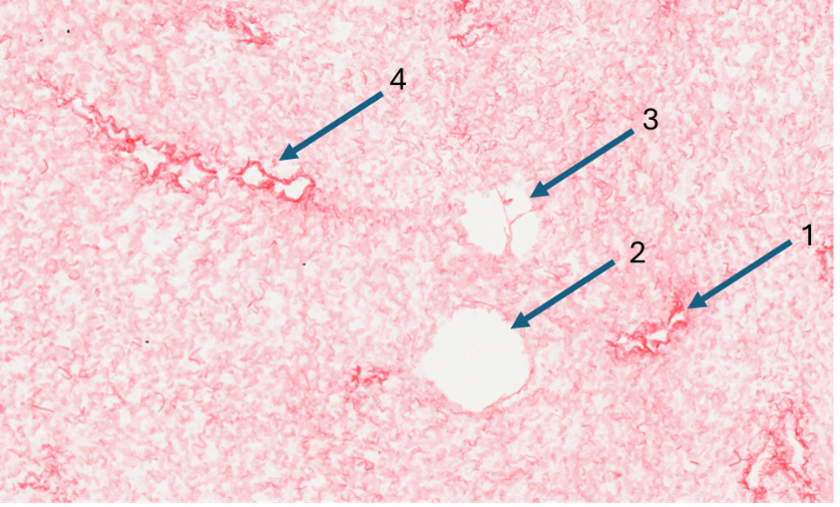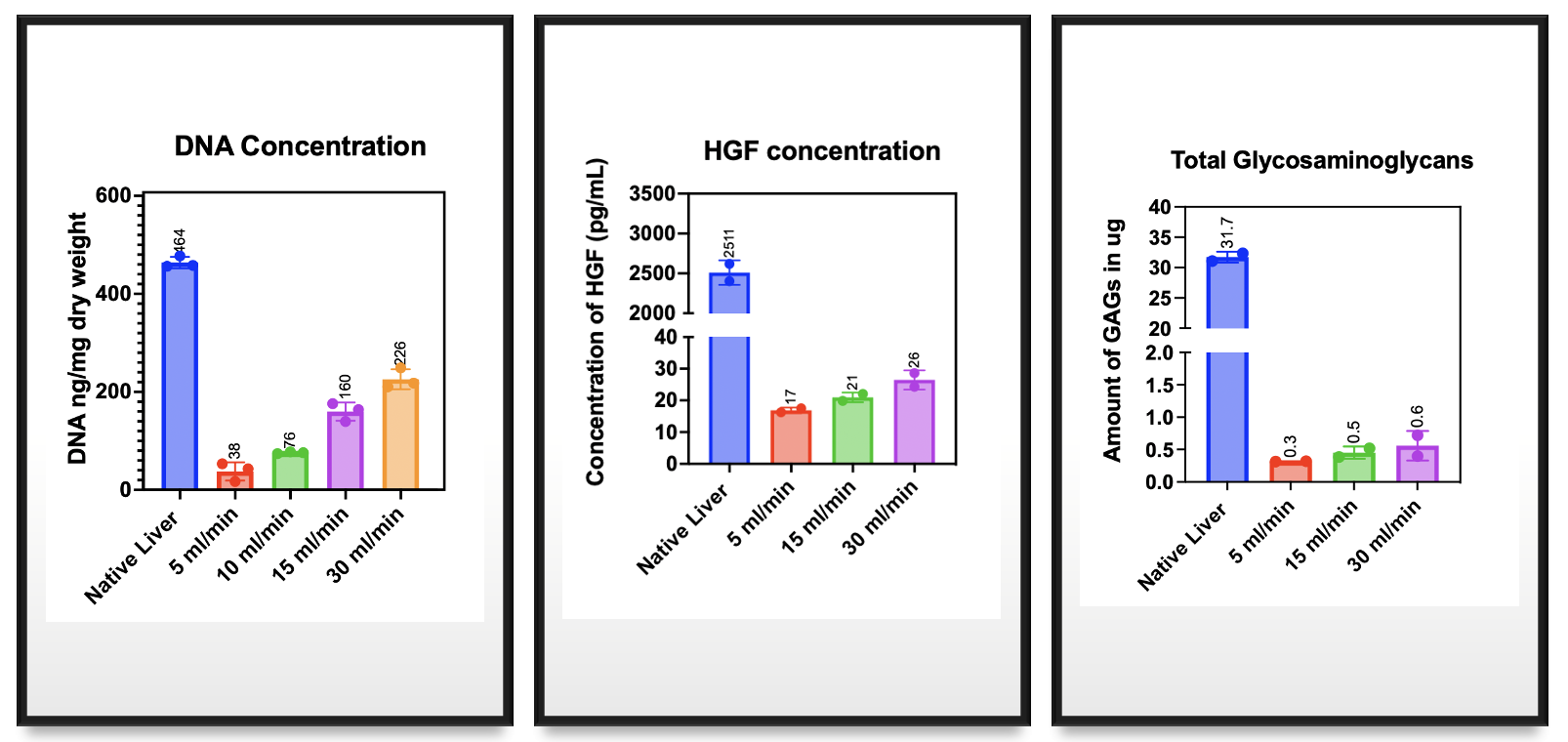Impact of decellularisation conditions on extra-cellular matrix integrity and recellularisation quality in hepatic scaffold regenerative bioengineering
Zeeshan Afzal1, Kourosh Saeb-Parsy1, Emmanuel Huguet 1.
1Department of Surgery , University of Cambridge , Cambridge, United Kingdom
Introduction: Liver transplantation is the only curative therapy for end-stage liver disease, but is limited by the organ shortage and associated with the adverse consequences of immunosuppression. Repopulation of decellularised whole organ scaffolds with appropriate cells of autologous origin offers a theoretically attractive solution, potentially allowing reliable and timely organ sourcing without the need for immunosuppression.
Decellularisation conditions may affect the integrity of the extra-cellular matrix ECM, and impact on scaffold recellularisation quality. We investigated the effect of varying decellularisation solution flow rate conditions on resultant scaffold properties.
Methods: Rat livers were decellularised by portal vein infusion of Triton X-100 and Ammonium Hydroxide, sterilised with peracetic acid and ethanol, and then equilibrated with culture medium in a perfusion apparatus. Scaffolds were recellularised with rat Bone Marrow Progenitor (rBMP) cells and perfused for up to five continuous days.
Decellularisation and post recellularisation perfusion were carried out comparing three different infusion rates: 5 ml/min, 15 ml/min and 30 ml/min. Decellularisation quality, ECM integrity and recellularisation characteristics were assessed by (1) light microscopy, (2) DNA quantification, (3) structural ECM component (Collagen, Elastin, Fibronectin and Laminin) immunofluorescence, (4) Hepatocyte growth factor (HGF) and total Glycosaminoglycans (GSGs) quantitative assays, and (5) Rat bone marrow stem cell engraftment characteristics after recellularisation.
Results: In comparison to lower flow rates (5ml/min), higher infusion rates (15ml/min and 30 ml/min) resulted in barotrauma to the ECM manifest in the appearance of parenchymal disruptions (figure 1a) creating false passages in the scaffold ECM.

Extravasation of decellularisation solution via these false passages resulted in poor decellularisation parameters with presence of remaining unwanted cells, higher residual DNA, HGF and GAG (Figure 2 a, b, and c), though major ECM components remained intact. Escape of repopulating cells via false passages resulted in inferior recellularisation characteristics with significantly fewer cells in sinusoidal spaces, and lesser vascular lumen cover scores.

Conclusions: Decellularisation conditions impact significantly on the integrity of ECM microarchitecture and biochemical constituents, with resultant consequences on recellularisation quality. This is the first report demonstrating barotrauma to ECM resulting from flow rate variations, with associated poor decellularisation and recellularisation parameters. These results inform future decellularisation techniques to optimise scaffold repopulation with the objective of regenerative bioengineering.
